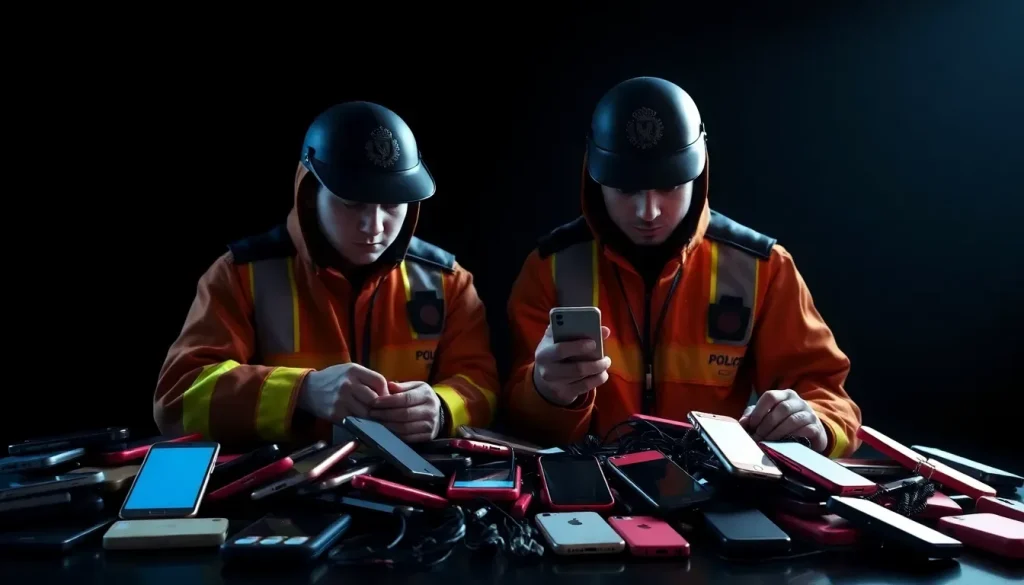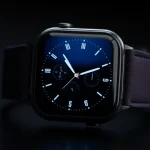UK Police Bust Smuggling Gang with Over 40000 Phones from One Stolen iPhone

The world of technology is ever-evolving, especially in the mobile phone sector where the debate between Android and iPhone continues to spark heated discussions. However, recent events have highlighted the darker side of this industry, showcasing how even the most secure devices can become instruments in criminal activities. This article delves into a remarkable case in London where an iPhone theft inadvertently led to the dismantling of a major smuggling operation.
- Police in London uncover a major smuggling operation through a stolen iPhone
- How the stolen iPhone led to the discovery of a vast smuggling network
- Financial incentives driving smartphone thefts
- The role of technology in combating smartphone crime
- Public awareness and prevention strategies
- The ongoing battle against mobile device theft
Police in London uncover a major smuggling operation through a stolen iPhone
The theft of mobile devices has become a pervasive issue globally, but the case in London exemplifies how a stolen iPhone played a pivotal role in law enforcement operations. The Metropolitan Police managed to track down a notorious gang engaged in smuggling operations primarily using the Apple device's built-in tracking feature.
This incident underscores the ongoing debate regarding the security of iPhones compared to their Android counterparts. While many tout Apple devices as having "unbreakable security", it is essential to recognize that no system is entirely immune to misuse. In fact, iPhones, despite their robust security features, can still be exploited, as evidenced by this case.
One of the significant security measures Apple implemented is the "inactive restart", a feature designed to protect user data by shutting down the device after four days of inactivity. However, in this instance, the iPhone's tracking functionality proved invaluable for the police, allowing them to locate a warehouse filled with stolen devices.
How the stolen iPhone led to the discovery of a vast smuggling network
The investigation began when a victim of theft used the "Find My Device" feature to locate their stolen iPhone. This action not only aided the victim but also provided critical leads for the police. The search led them to a warehouse near Heathrow Airport, where they discovered over 2,000 stolen iPhones ready for shipment.
Authorities estimate that this gang had successfully smuggled around 40,000 mobile phones from the UK to China within a single year. This staggering number highlights the scale of the operation and the demand for iPhones in markets where they are sold at premium prices.
Interestingly, the lure of these devices lies in their ability to help users bypass government censorship in countries like China. As such, the demand for stolen iPhones has surged, leading to a significant increase in related crimes.
Financial incentives driving smartphone thefts
The profitability of the stolen mobile phone market is alarming. Reports indicate that gang members would pay street thieves up to £300 for each stolen iPhone, subsequently reselling them in China for as much as £4,000. The financial incentives for thieves have shifted dramatically, with many opting for phone theft over traditional criminal activities.
- Street thieves are paid up to £300 per stolen iPhone.
- Stolen iPhones can fetch prices up to £4,000 in China.
- Demand for iPhones remains high due to their ability to bypass censorship.
- Estimates suggest around 80,000 mobile phones are stolen annually in London.
- The police have managed to reduce thefts by 14% with their ongoing efforts.
With such lucrative returns, this shift in criminal behavior poses a significant challenge for law enforcement. The Metropolitan Police's efforts are commendable, but the scale of smartphone theft remains staggering.
The role of technology in combating smartphone crime
As the situation continues to evolve, there is a growing call for manufacturers, particularly Apple, to enhance security measures further. Authorities are urging the implementation of additional features that could help prevent stolen phones from being activated or sold in secondary markets. Some proposed features include:
- Enhanced tracking systems that remain active even after a factory reset.
- Locking mechanisms that prevent stolen devices from being reactivated without the original owner's credentials.
- Improved reporting systems that allow quick notifications to law enforcement when a phone is reported stolen.
Such measures could significantly deter thefts and reduce the allure of engaging in these criminal activities. Furthermore, collaboration between tech companies and law enforcement could lead to innovative solutions that benefit consumers and reduce crime rates.
Public awareness and prevention strategies
While technology plays a crucial role in combating smartphone theft, public awareness is equally important. Consumers need to understand how to protect their devices and what steps to take if their phone is stolen. Here are some effective strategies:
- Always enable tracking features on mobile devices.
- Use strong passwords and biometric security options like fingerprints or facial recognition.
- Educate oneself about the local crime rates and potential risks when in public spaces.
- Consider using phone insurance to cover potential losses.
By adopting these measures, individuals can better safeguard their devices and contribute to a decrease in smartphone thefts.
The ongoing battle against mobile device theft
The case of the stolen iPhone that led to the unraveling of a significant smuggling operation is a reminder of the complexities surrounding mobile device theft. It highlights the dual nature of technology—while it can facilitate crime, it can also serve as a powerful tool for justice.
As law enforcement agencies continue to adapt to these challenges, the collaboration with tech companies and increased public awareness will be vital in the ongoing battle against mobile device theft. Only through a comprehensive approach can we hope to reduce the prevalence of such crimes and protect consumers.
For a deeper look into the police operations and the implications of this case, check out the following video:




Leave a Reply